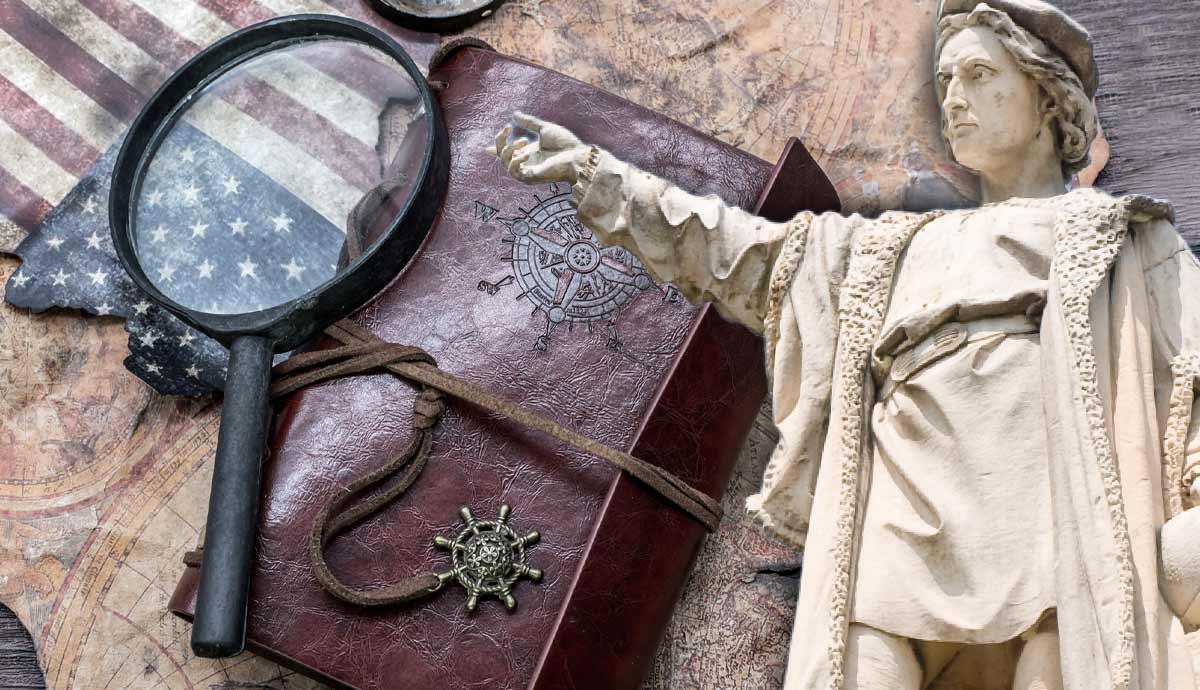
In 1492, Christopher Columbus “sailed the ocean blue,” hoping to cross the Atlantic Ocean for an all-water route to the Far East. What Columbus discovered, however, was something he did not expect. His journeys opened up connections between lands that had previously been entirely disconnected, thus opening up a new way of understanding the world.
Columbus Was Trying to Discover a Route to the Far East

Columbus had read various (often fabricated) accounts of land journeys to Asia, routes which were now closed because the Turks had conquered Constantinople and effectively closed the land trade routes to the East. Columbus sought to find a water route in the opposite direction by sailing west across the Atlantic. However, Columbus had a misunderstanding of how the circumference of the earth was calculated, and thought Asia lied only about 3000 miles west of the Canary Islands (instead of closer to 12,000 miles with a large land mass in the way).
His miscalculations were a problem which cost him funding from the nautical experts of King John II of Portugal and a previous attempt with Isabella and Ferdinand of Spain. When the Spanish rulers completed the Reconquista of Spain, they were able to provide funding to Columbus for his expedition.
He First Landed on a Small Caribbean Island

Columbus’s first voyage – out of four – landed him initially on one of the islands of the Bahamas which he named San Salvador… almost exactly in the place he predicted he would find his destination. In a message to the treasurer of Spain, he wrote:
“I came into the Indian Sea, where I discovered many islands inhabited by numerous people. I took possession of all of them for our most fortunate King by making public proclamation and unfurling his standard, no one making any resistance.”
And later, in the same letter:
“As soon as we reached the island which I have just said was called Juana, I sailed along its coast some considerable distance towards the West, and found it to be so large, without any apparent end, that I believed it was not an island, but a continent, a province of Cathay.”
Columbus did not find the Indian Ocean or Cathay (China) – he was into the Caribbean and the large island he thought was part of Cathay, and he named Juana, we now know as Cuba. His later voyages brought him to locations close to his initial landings, as well as portions of mainland South America, Costa Rica and the Honduras.
He Thought He Discovered What He Was Looking For

Columbus never quite admitted that he was wrong about reaching the Orient, but it does appear that he realized that he found some sort of new land, as his fourth voyage was an attempt to find a passage through the new continent to the other side. In the journal of his third voyage, he wrote:
“”I have come to believe that this is a mighty continent which was hitherto unknown. I am greatly supported in this view by reason of this great river, and by this sea which is fresh.”
However, it does not appear that he realized the new continent had no connection to India or China; it appears he held onto his miscalculations regarding the size of the earth, despite numerous nautical experts from both Spain and Portugal disagreeing with his conclusions. Part of his refusal to accept he was wrong may have come from the matter that he did discover land around where he originally thought he would, and so he thought he was proven right to some degree. Columbus thought he found some sort of location near the Orient, but never quite realized it was a new continent a long way from the Far East.
Columbus Discovered Something He Did Not Expect

What Columbus discovered, unknowingly, was two things. First, he did find new avenues for what the Old World was looking for that had been lost – trade, wealth, and, for some, the spread of Christianity. The second thing that he discovered was far greater – with a new pathway and new lands that only had limited contact with each other, he opened a new era for the entire world, and even though he thought the world was smaller in size, his discovery effectively doubled the size of the earth for both the Old World and the New.










